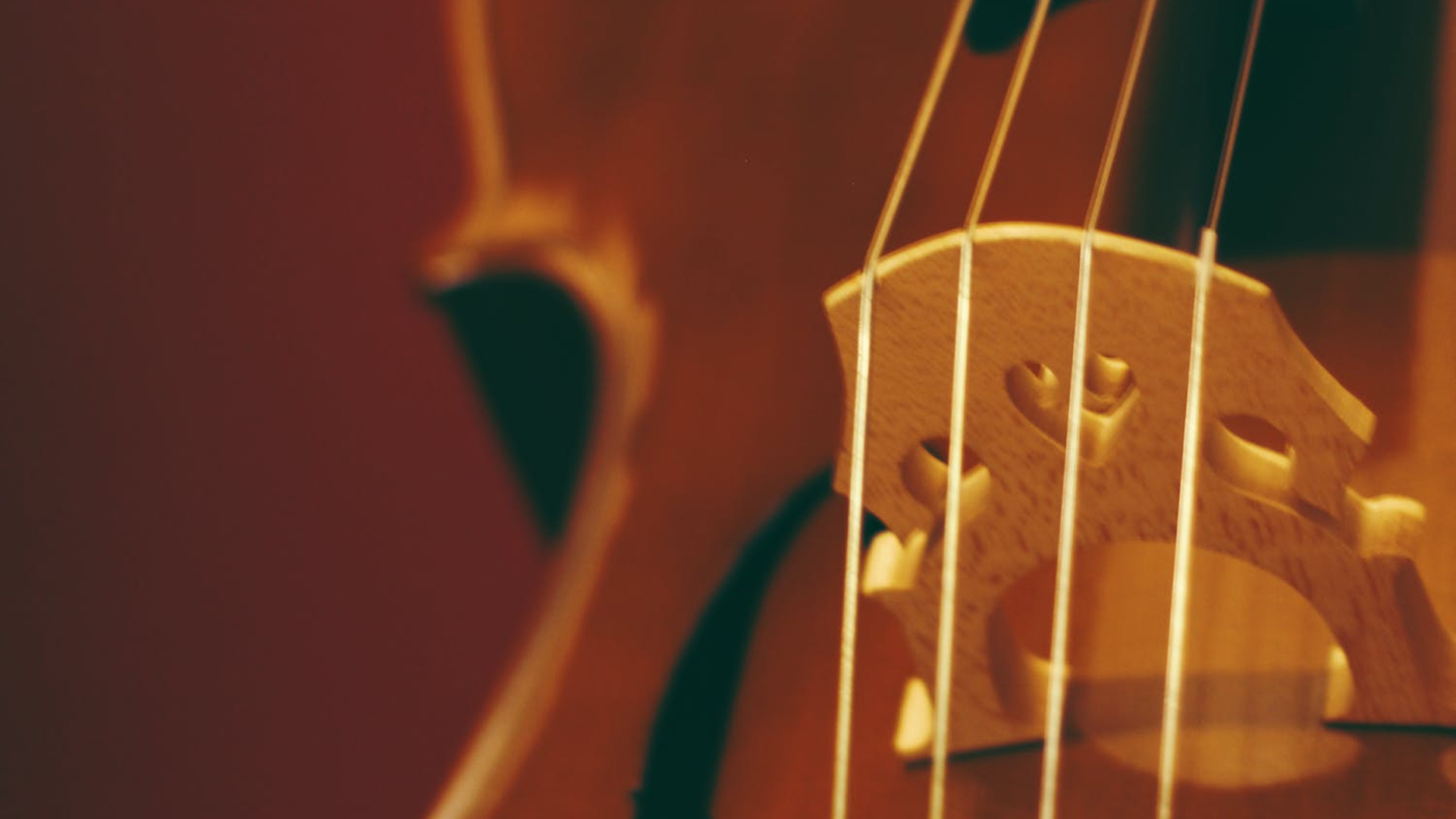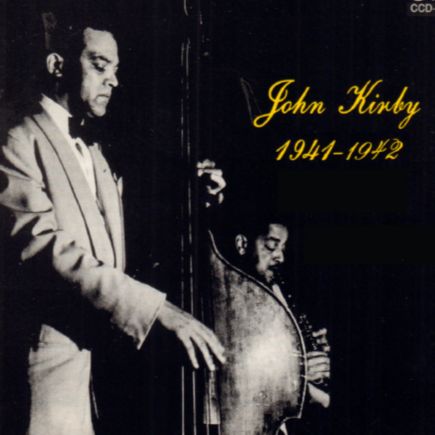John Kirby: l’élégance du swing en miniature
John Kirby, contrebassiste, tubiste et chef d’orchestre américain, demeure l’un des artisans les plus raffinés du jazz de l’entre-deux-guerres. Figure singulière de l’ère du swing, il a su marier sophistication harmonique et précision rythmique dans un style d’une élégance rare. Surnommé le ‘Mozart du jazz’ par certains critiques, il a façonné une esthétique distincte, à mi-chemin entre la légèreté du swing et la rigueur de la musique de chambre.
Orphelin très jeune, John Kirby se forme d’abord au trombone avant de se tourner vers la contrebasse, instrument qui deviendra le vecteur de son succès. Sa première expérience notable se fait au sein du groupe Bill Brown and His Brownies (1928-1930), avant qu’il ne rejoigne l’un des orchestres les plus prestigieux de l’époque, celui de Fletcher Henderson. Entre 1930 et 1934, il y forge son style aux côtés de musiciens d’exception tels que Benny Goodman et Buster Bailey, développant une conception orchestrale fondée sur la clarté et la cohésion des timbres.
Après un passage dans les formations de Chick Webb et Lucky Millinder, Kirby trouve véritablement sa voie en 1937, lorsqu’il fonde son propre sextette à l’Onyx Club de Manhattan. Baptisé John Kirby and His Orchestra, mais souvent surnommé les Onyx Club Boys, l’ensemble réunit des musiciens remarquables: le trompettiste Charlie Shavers, le clarinettiste Buster Bailey, le saxophoniste Russell Procope, le pianiste Billy Kyle et le batteur O’Neill Spencer, bientôt rejoints par la chanteuse Maxine Sullivan, alors épouse de Kirby.
Le sextette se distingue rapidement par un son d’une pureté inédite. Ses arrangements, précis et équilibrés, revisitent les standards avec une élégance presque classique. Des morceaux tels que Undecided ou Loch Lomond illustrent cet art de la miniature orchestrale, où chaque instrument trouve sa place dans un dialogue d’une rigueur et d’une légèreté exemplaires. Le groupe connaît un immense succès à la fin des années 1930, incarnant une forme de swing à la fois intellectuel et accessible, empreint d’humour et de grâce.
À partir de 1942, l’évolution du goût du public et la guerre entraînent le déclin du sextette. Kirby tente de relancer sa carrière en collaborant avec la jeune Sarah Vaughan, sans retrouver toutefois le rayonnement de ses années fastes. Dans les années 1950, il forme un quartette avec lequel il se produit notamment au Carnegie Hall, avant de rejoindre divers ensembles, dont ceux de Red Allen, Buck Clayton et Benny Carter.
John Kirby: la elegancia del swing en miniatura
John Kirby, contrabajista, tubista y director de orquesta estadounidense, fue uno de los artesanos más refinados del jazz de entreguerras. Figura singular de la era del swing, supo combinar sofisticación armónica y precisión rítmica dentro de un estilo de una elegancia poco común. Apodado el “Mozart del jazz” por algunos críticos, forjó una estética propia, a medio camino entre la ligereza del swing y la disciplina de la música de cámara.
Huérfano desde joven, John Kirby se formó primero en el trombón antes de dedicarse al contrabajo, el instrumento que lo llevaría al reconocimiento. Su primera experiencia notable fue con el grupo Bill Brown and His Brownies (1928-1930), antes de unirse a una de las orquestas más prestigiosas del momento, la de Fletcher Henderson. Entre 1930 y 1934 desarrolló allí su estilo junto a músicos excepcionales como Benny Goodman y Buster Bailey, cultivando una concepción orquestal basada en la claridad y la cohesión de los timbres.
Tras un paso por las formaciones de Chick Webb y Lucky Millinder, Kirby encontró su verdadera voz en 1937, cuando fundó su propio sexteto en el Onyx Club de Manhattan. Bautizado John Kirby and His Orchestra, aunque a menudo conocido como los Onyx Club Boys, el conjunto reunió a músicos sobresalientes: el trompetista Charlie Shavers, el clarinetista Buster Bailey, el saxofonista Russell Procope, el pianista Billy Kyle y el baterista O’Neill Spencer, a los que se uniría más tarde la cantante Maxine Sullivan, esposa de Kirby en aquella época.
El sexteto destacó rápidamente por su sonido puro y depurado. Sus arreglos, precisos y equilibrados, reinterpretaron los estándares con una elegancia casi clásica. Temas como Undecided o Loch Lomond ilustran este arte de la miniatura orquestal, donde cada instrumento encuentra su lugar dentro de un diálogo tan riguroso como ligero. El grupo alcanzó un gran éxito a finales de los años treinta, encarnando un swing intelectual y accesible a la vez, impregnado de humor y gracia.
A partir de 1942, el cambio en los gustos del público y la guerra provocaron el declive del sexteto. Kirby intentó relanzar su carrera colaborando con la joven Sarah Vaughan, aunque sin recuperar el brillo de sus años dorados. En la década de 1950 formó un cuarteto con el que actuó en el Carnegie Hall, y más tarde se unió a diversos conjuntos, entre ellos los de Red Allen, Buck Clayton y Benny Carter.
John Kirby: l’eleganza dello swing in miniatura
John Kirby, contrabbassista, tubista e direttore d’orchestra statunitense, rimane uno degli artigiani più raffinati del jazz tra le due guerre mondiali. Figura singolare dell’era dello swing, seppe unire sofisticazione armonica e precisione ritmica in uno stile di rara eleganza. Soprannominato il “Mozart del jazz” da alcuni critici, creò un’estetica unica, a metà strada tra la leggerezza dello swing e la disciplina della musica da camera.
Rimasto orfano in giovane età, John Kirby iniziò con il trombone prima di dedicarsi al contrabbasso, lo strumento che gli avrebbe portato il successo. La sua prima esperienza di rilievo fu con il gruppo Bill Brown and His Brownies (1928-1930), prima di entrare a far parte di una delle orchestre più prestigiose dell’epoca, quella di Fletcher Henderson. Tra il 1930 e il 1934 affinò il proprio stile al fianco di musicisti straordinari come Benny Goodman e Buster Bailey, sviluppando una concezione orchestrale fondata sulla chiarezza e la coesione timbrica.
Dopo un periodo con le formazioni di Chick Webb e Lucky Millinder, Kirby trovò la propria voce nel 1937, quando fondò il suo celebre sestetto all’Onyx Club di Manhattan. Chiamato John Kirby and His Orchestra, ma spesso conosciuto come Onyx Club Boys, il gruppo riuniva talenti eccezionali: il trombettista Charlie Shavers, il clarinettista Buster Bailey, il sassofonista Russell Procope, il pianista Billy Kyle e il batterista O’Neill Spencer, cui si aggiunse successivamente la cantante Maxine Sullivan, allora moglie di Kirby.
Il sestetto si distinse rapidamente per un suono puro e cristallino. I suoi arrangiamenti, equilibrati e minuziosi, reinterpretavano gli standard con un’eleganza quasi classica. Brani come Undecided e Loch Lomond rappresentano perfettamente quest’arte della miniatura orchestrale, dove ogni strumento trova spazio in un dialogo tanto rigoroso quanto leggero. Alla fine degli anni Trenta, il gruppo ottenne un grande successo, incarnando un tipo di swing insieme intellettuale e accessibile, intriso di grazia e ironia.
Dal 1942, con il mutare del gusto del pubblico e l’avvento della guerra, la fortuna del sestetto cominciò a declinare. Kirby cercò di rilanciare la propria carriera collaborando con la giovane Sarah Vaughan, senza tuttavia ritrovare lo splendore del passato. Negli anni Cinquanta formò un quartetto con il quale si esibì al Carnegie Hall e in seguito collaborò con diversi ensemble, tra cui quelli di Red Allen, Buck Clayton e Benny Carter.
John Kirby: the elegance of swing in miniature
John Kirby, American bassist, tubist, and bandleader, remains one of the most refined craftsmen of the jazz interwar era. A distinctive figure of the swing period, he combined harmonic sophistication and rhythmic precision within a style of rare elegance. Nicknamed the “Mozart of jazz” by some critics, he forged a unique aesthetic that bridged the lightness of swing with the discipline of chamber music.
Orphaned at a young age, John Kirby first trained on the trombone before turning to the double bass, the instrument that would bring him fame. His first notable experience came with Bill Brown and His Brownies (1928–1930), before joining one of the era’s premier orchestras, Fletcher Henderson’s band. Between 1930 and 1934, he honed his style alongside exceptional musicians such as Benny Goodman and Buster Bailey, developing an orchestral conception based on clarity and tonal balance.
After stints with Chick Webb and Lucky Millinder, Kirby truly found his voice in 1937 when he formed his own sextet at Manhattan’s Onyx Club. Named John Kirby and His Orchestra but often known as the Onyx Club Boys, the group brought together outstanding musicians: trumpeter Charlie Shavers, clarinetist Buster Bailey, saxophonist Russell Procope, pianist Billy Kyle, and drummer O’Neill Spencer, later joined by singer Maxine Sullivan, Kirby’s wife at the time.
The sextet quickly stood out for its pure, chamber-like sound. Its arrangements—precise, balanced, and elegant—reimagined jazz standards with almost classical poise. Pieces such as Undecided and Loch Lomond exemplify this art of orchestral miniaturism, where every instrument finds its voice within a dialogue of clarity and grace. The group achieved great success in the late 1930s, embodying a form of swing both intellectual and accessible, full of wit and refinement.
By 1942, changes in public taste and the onset of war brought about the sextet’s decline. Kirby attempted to revive his career by collaborating with a young Sarah Vaughan but was unable to regain his former prominence. In the 1950s, he formed a quartet that performed at Carnegie Hall and later joined various ensembles, including those led by Red Allen, Buck Clayton, and Benny Carter.


